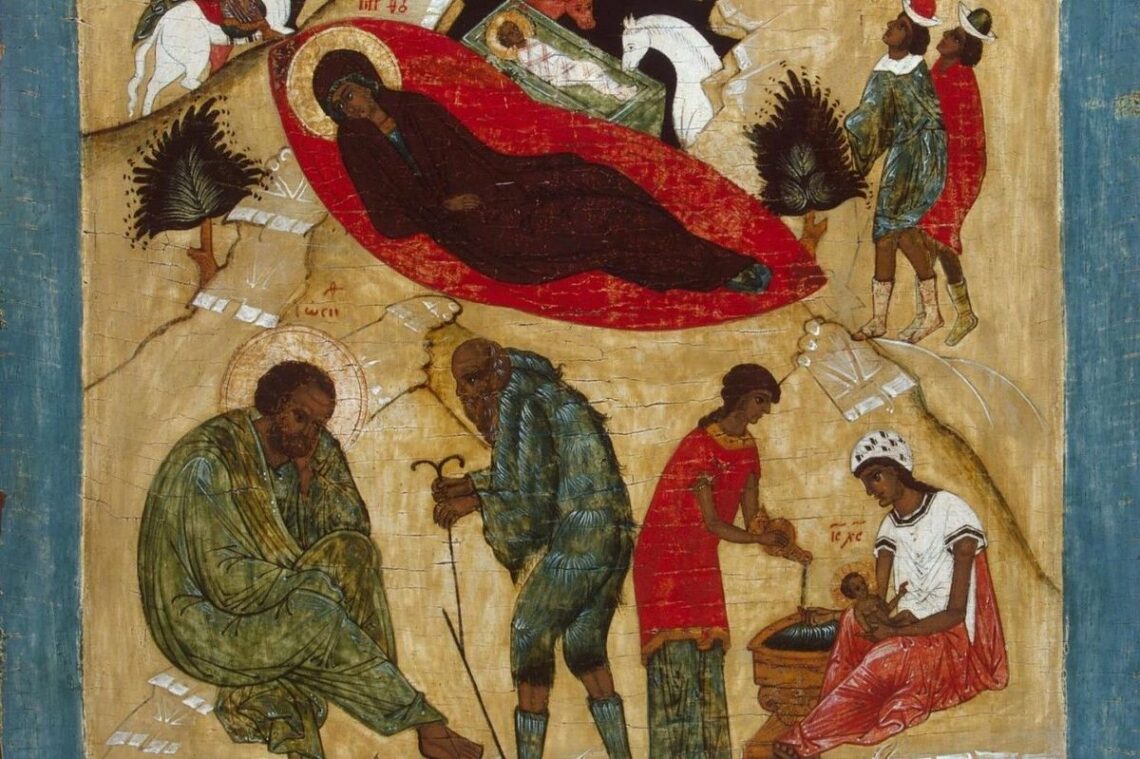Matthew 2:13-23 2024/01/14 Osaka Church
Christ is born!
The main character of today’s gospel is Joseph, the “father” of the Lord.
When Joseph was informed by an angel that the newborn Jesus was in danger, so he took his family and took refuge in Egypt. Eventually, even after his troubles passed, he did not return to Bethlehem, but chose to live in seclusion in a town called Nazareth in the region of Galilee. Even though he was guided by an angel’s message, it was a prudent and realistic decision by Joseph.
Mary, the mother of the Lord, accepted the incomprehensible will of God, for God to dwell in her womb. She also accepted this as a physical reality of being pregnant with her child. Therefore, Mary had no doubts about the child she was pregnant with. Until the very end, she maintained her faith in Christ, the God who was born from her, who was only a human woman.
On the other hand, the Lord’s father, Joseph, although they are not actually related by blood, only appears in this nativity scene and in the event when the Lord was twelve years old. Joseph’s image is not as vividly depicted as Mary’s.
This important image of our Lord’s father, Joseph, can still be seen today in the Nativity icon, which is placed in the center of the church. He is sitting on lower left of the icon, resting his chin on his back with a blank look on his face. An old man standing nearby is talking to him. He struggles to believe that God, by His Holy Spirit, placed His Son in the womb of the virgin Mary, just as the angel had told him when his virgin wife gave birth to a child. Here is a picture of pitiful husband. The old man in the icon is a devil. “Can you really believe that a virgin can give birth to a child? Something bad has happened, and the angel’s message is just a fantasy of yours who can’t face the reality,” he says, stirring up disbelief. The church also projects our own image onto this image of Joseph. It is the reality of our faith. It is a hesitation to believe in things that cannot be grasped by reason or senses. It is also the views of religion offered by this world that fuel this disbelief. They use anthropology, history, philosophy, and psychology to explain the origins of religious beliefs and reduce religion to a form of human spiritual culture. These ideas and studies say, “The Bible teaches that man was created in the image of God, but in reality man created God in his own image.” This is a root of instability.
Don’t you feel a little closer to the person named Joseph? In any case, Joseph was torn between faith and disbelief. This suffering would last his entire life.
However, as I said at the beginning, this man, Joseph chose prudent and pragmatic actions to protect Jesus Christ, the Son of God who was born into this world. Even though he was in the truly painful tension of being torn between faith and disbelief, he continued to regain his faith in his decision every time his faith wavered. Joseph is the hope of those of us who yearn for pure, simple and straightforward faith, but are constantly treading water.
Also, this faith like Joseph’s always protects the religious life, the church, and the family from fanaticism, from emotional beliefs, from conflicts, and from the breakdown of order, with careful and pragmatic consideration. For this reason, there is a “sober feeling” that Joseph demonstrates here that is crucial.
However, we must never forget that this realistic “sober sense” of Joseph was given to him in order to protect Christ, and not to maintain a moderate relationship with God and the church without investing too much. It is not something that has been given to us so that we can maintain a relationship at a distance and maintain a “worldly life” and “our own way of life” that is neither hot nor cold.
Finally, let us look at the Nativity icon once again. If we follow the gaze of Mary lying next to Jesus, we will see the image of Joseph swayed by the devil’s instigation. Through Mary’s gaze, we also receive compassion, solace, and encouragement from the Lord Jesus.

